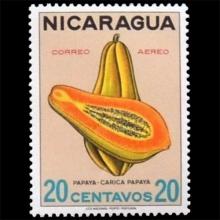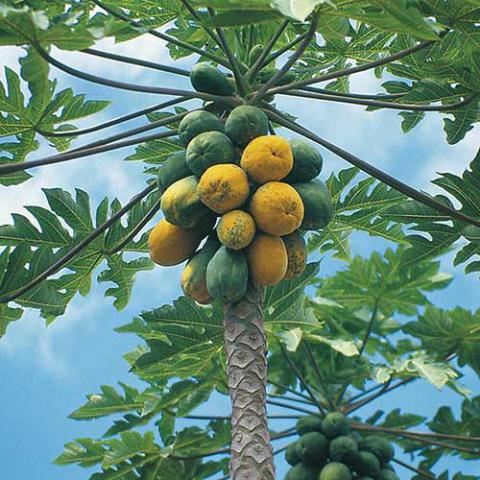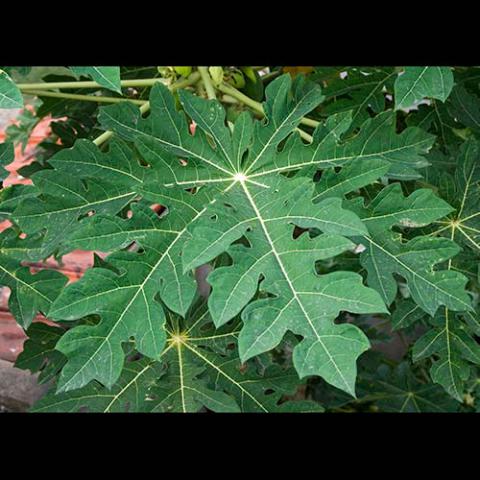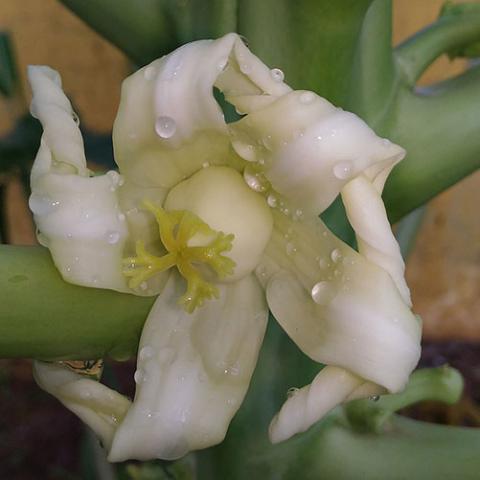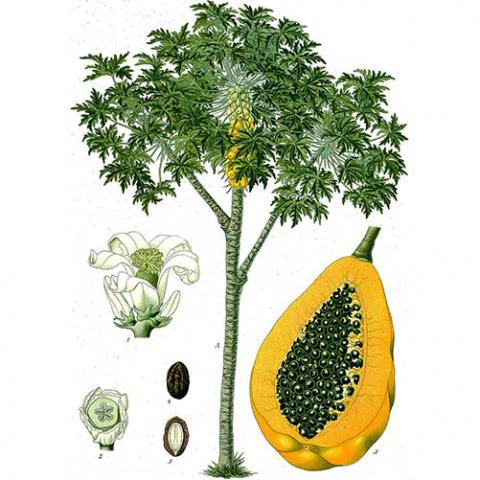NAME(S)
TAXONOMY
PLANTAE ID
THERAPEUTIC
Ghana
Issued:
Stamp:
Carica papaya
Bangladesh
Issued:
Stamp:
Carica papaya
Nicaragua
Issued:
Stamp:
Carica papaya
Ghana
Issued:
Stamp:
Carica papaya
Bangladesh
Issued:
Stamp:
Carica papaya
Nicaragua
Issued:
Stamp:
Carica papaya
Ghana
Issued:
Stamp:
Carica papaya
Bangladesh
Issued:
Stamp:
Carica papaya
Nicaragua
Issued:
Stamp:
Carica papaya
Genus species (Plantae): Carica papaya
The papaya (/pəˈpaɪə/, US: /pəˈpɑːjə/) (from Carib via Spanish), papaw, (/pəˈpɔː/) or pawpaw (/ˈpɔːpɔː/ is the plant Carica papaya, one of the 22 accepted species in the genus Carica of the family Caricaceae. Its origin is in the tropics of the Americas, perhaps from Central America and southern Mexico.
Description
The papaya is a small, sparsely branched tree, usually with a single stem growing from 5 to 10 m (16 to 33 ft) tall, with spirally arranged leaves confined to the top of the trunk. The lower trunk is conspicuously scarred where leaves and fruit were borne. The leaves are large, 50–70 cm (20–28 in) in diameter, deeply palmately lobed, with seven lobes. All parts of the plant contain latex in articulated laticifers. Papayas are dioecious. The flowers are five-parted and highly dimorphic; the male flowers have the stamens fused to the petals. The female flowers have a superior ovary and five contorted petals loosely connected at the base. Male and female flowers are borne in the leaf axils, and the males are multiflowered dichasia, and the female flowers are in few-flowered dichasia. The pollen grains are elongated and approximately 35 microns in length. The flowers are sweet-scented, open at night, and wind- or insect-pollinated.
The fruit is a large berry that is generally spherical or cylinder in form and about 15–45 cm (5.9–17.7 in) long and 10–30 cm (3.9–11.8 in) in diameter. It is ripe when it feels soft (as soft as a ripe avocado or softer), its skin has attained an amber to orange hue and along the walls of the large central cavity are attached numerous black seeds.
Reference: Wikipedia, www.kanoahawaii.com



